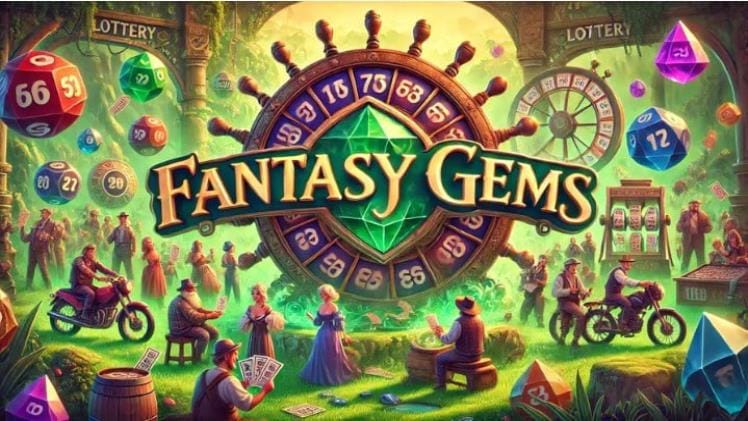Visual-spatial skills are essential for navigating environments, interpreting objects in space, and recognizing relationships between different elements. These skills influence cognitive functions such as memory, problem-solving, and motor coordination, making them valuable in education, professional tasks, and everyday activities. Color gaming, which integrates color-based mechanics with spatial reasoning, offers an engaging way to train and enhance visual-spatial abilities. Through structured challenges, interactive exercises, and strategic gameplay, users can improve their capacity to process spatial information efficiently.
Table of Contents
- 1 The Role of Color in Visual-Spatial Processing
- 2 Enhancing Spatial Memory Through Color Gaming
- 3 Developing Strategic Thinking in Spatial Gameplay
- 4 Strengthening Hand-Eye Coordination in Interactive Color Games
- 5 Educational Applications of Color Gaming for Spatial Development
- 6 Future Innovations in Visual-Spatial Training Through Gaming
- 7 Conclusion
The Role of Color in Visual-Spatial Processing
Colors play a fundamental role in how individuals perceive and organize spatial information. The human brain relies on color differentiation to distinguish objects, understand depth relationships, and recognize movement patterns. When incorporated into gaming environments, colors enhance visual-spatial engagement by helping players track objects, predict movements, and categorize elements effectively.
In interactive color-based games, players must process multiple visual cues simultaneously, developing their ability to recognize spatial patterns quickly. The association between colors and spatial positioning strengthens memory retention, reinforcing cognitive connections related to object placement, distance estimation, and orientation. Color segmentation in gaming environments also guides users in navigating complex visual landscapes, improving their ability to interpret spatial relationships in real-world scenarios.
Enhancing Spatial Memory Through Color Gaming
Color-based gaming mechanics actively engage spatial memory by requiring players to recall positions, sequences, and movement trajectories. Puzzle games that involve color coordination help users practice remembering arrangements, reinforcing their ability to store and retrieve spatial information efficiently.
Pattern recognition games stimulate cognitive agility, encouraging players to anticipate sequences based on color-coded cues. As users learn to identify repeating patterns, their spatial awareness improves, allowing them to organize information more effectively in both digital and physical environments. The application of spatial memory training extends beyond gaming, supporting skills needed for navigation, map reading, and architectural visualization.
Interactive exercises involving object tracking enhance focus and attention span by challenging players to monitor color movements within defined spaces. Rapid object shifts require split-second adjustments in perception, reinforcing visual-spatial coordination and adaptability.
Developing Strategic Thinking in Spatial Gameplay
Color gaming environments often incorporate problem-solving mechanics that encourage strategic thinking. Players must analyze spatial arrangements, evaluate possible movements, and optimize decision-making based on color placement. These exercises promote logic-driven approaches to spatial tasks, strengthening the ability to assess environments effectively.
Puzzle-based games require users to align colored elements within structured grids, refining spatial reasoning through logical deductions. By practicing these interactions regularly, players develop pattern prediction skills, allowing them to anticipate color movements before they occur. This ability enhances adaptability in real-world applications such as strategic planning, route optimization, and object manipulation.
Three-dimensional color-based games introduce depth perception training, where players must analyze multi-layered visual structures. This engagement fosters improved spatial visualization, enabling users to interpret complex object relationships in three-dimensional spaces. The development of spatial strategy aids in careers requiring depth analysis, including engineering, graphic design, and medical imaging interpretation.
Strengthening Hand-Eye Coordination in Interactive Color Games
The relationship between visual-spatial skills and hand-eye coordination plays a vital role in both gaming and physical activities. Color gaming environments integrate movement-based challenges that require precise visual tracking and responsive actions. Players improve their coordination by synchronizing visual perception with motor responses, refining their ability to react efficiently to color stimuli.
Reaction-based games enhance reflex speed by introducing color shifts that demand immediate input. Players must adjust their movements based on real-time color changes, improving their ability to process visual data and execute rapid responses. This training benefits activities requiring precise motor control, such as sports, driving, and technical skill applications.
Interactive gesture-based color games introduce immersive engagement, where users manipulate spatial elements using physical movements. These exercises reinforce kinesthetic awareness, strengthening the connection between visual processing and motor execution. By practicing spatial interactions in digital environments, individuals develop enhanced coordination skills applicable in various real-world tasks.
Educational Applications of Color Gaming for Spatial Development
Color gaming platforms serve as valuable tools in educational settings, supporting learners in strengthening visual-spatial reasoning. Classroom applications involve interactive exercises where students engage with color-based puzzles, enhancing cognitive flexibility while improving spatial awareness.
Early childhood development programs integrate color recognition and spatial arrangement activities to support foundational cognitive growth. By interacting with color-driven spatial challenges, young learners refine their ability to interpret object relationships, preparing them for advanced analytical tasks.
Specialized training modules designed for individuals with cognitive impairments or learning differences utilize color gaming mechanics to reinforce spatial processing skills. Adaptive learning environments tailor exercises to individual proficiency levels, ensuring accessibility while fostering incremental improvement in spatial reasoning.
Future Innovations in Visual-Spatial Training Through Gaming
Advancements in gaming technology will continue shaping visual-spatial training models. Artificial intelligence-driven gaming platforms like ok win login app will adapt challenges dynamically based on user proficiency, optimizing spatial skill development through personalized learning experiences.
Augmented reality applications will introduce immersive spatial simulations, allowing users to interact with digital color-based structures within physical environments. This integration will refine depth perception, spatial orientation, and real-world navigation capabilities through advanced interactive engagements.
Virtual reality gaming environments will elevate spatial training by introducing three-dimensional simulations that mimic real-world object interactions. Users will engage with color-based tasks in dynamic settings, reinforcing spatial memory retention and analytical reasoning through immersive problem-solving exercises.
Neuroscientific research into visual-spatial cognition will influence future gaming mechanics, introducing refined spatial recognition models that enhance learning outcomes. As digital gaming continues evolving, the role of color-based spatial exercises will expand, offering valuable applications across multiple cognitive training domains.
Conclusion
Visual-spatial training through color gaming enhances cognitive abilities by strengthening memory retention, strategic thinking, hand-eye coordination, and problem-solving skills. Interactive gaming environments engage users in structured spatial exercises that improve perception, adaptability, and reflex precision. As advancements in technology continue shaping educational applications, color gaming will remain a valuable tool for developing essential spatial reasoning abilities. Future innovations will introduce immersive learning models that refine interactive spatial training, ensuring continued growth in visual-spatial proficiency across diverse fields.




